This is our comprehensive RV travel guide on getting started with your plumbing systems. In this guide, we will explore the basics of RV plumbing, including the water system, toilets, and showers. Further, we will delve into how RV plumbing works and fixtures, helping you make informed choices for your RV adventures. Let’s dive in!
The Basics of Plumbing in a Recreational Vehicle

So, how does RV plumbing work? When it comes to plumbing systems in RVs, understanding the basics is essential for a smooth and hassle-free travel experience. We are going to familiarize you with all the components: plumbing parts, RV pipe leaks, and RV water tanks.
Plumbing in an RV encompasses a range of components that make up the water system in your vehicle. These include pipes, fittings, valves, connectors, and pumps. Knowing the purpose and functionality of each part will help you troubleshoot issues and perform maintenance effectively.
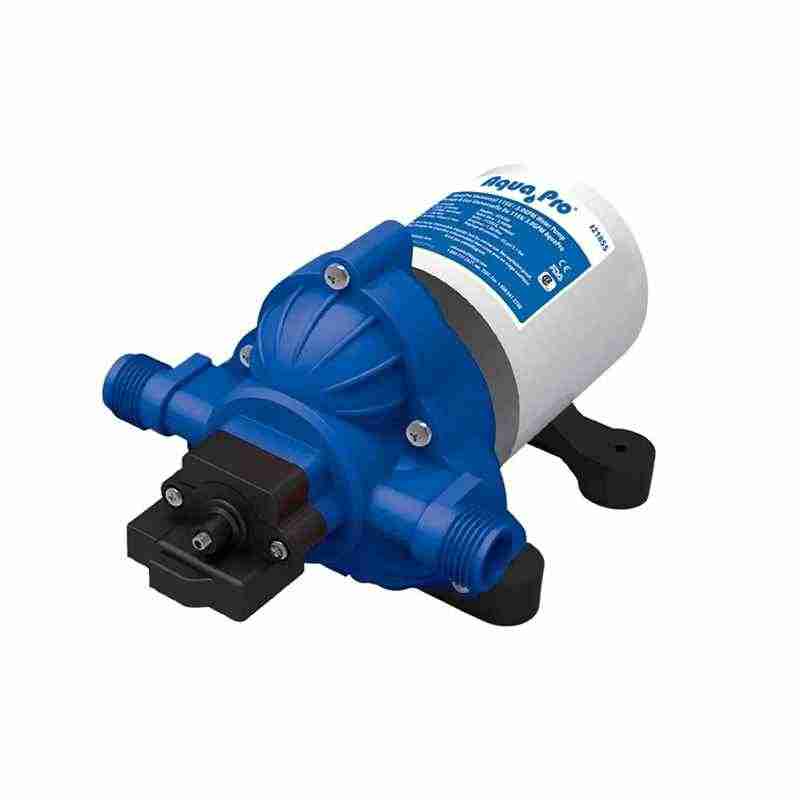
One common concern is pipe leaks. It is important to detect and address leaks promptly to prevent water damage. Further, regularly inspecting the plumbing system, including connections, joints, and fixtures, can help identify potential leaks. Swift repairs or replacements of damaged pipes or fittings are necessary to maintain the integrity of your plumbing system!
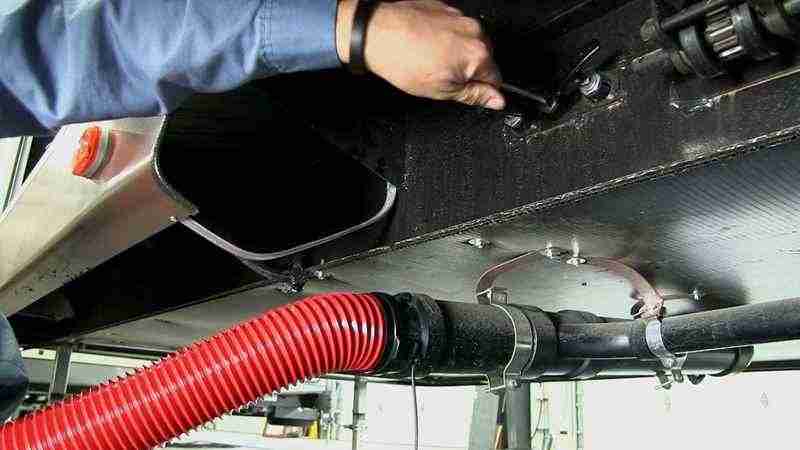
Let’s not forget about RV water tanks, which are crucial to providing a water supply for various purposes, such as drinking, cooking, and sanitation. When you understand how your RV water tanks operate, including their capacity and proper maintenance, this ensures a reliable water source throughout your travels. Always clean and sanitize the tanks, monitor water levels, and utilize appropriate treatments or filters to maintain water quality and prevent contamination.
With this knowledge, you’ll be better equipped to maintain and troubleshoot your RV’s plumbing system, contributing to a comfortable and enjoyable travel experience on the road!
The RV Water System
The RV water system is a vital component of your RV’s plumbing system, ensuring a steady supply of clean water for various needs. We are going to explore key elements such as the RV water filter and RV water pump, where to dump tanks, and differentiating between gray and black water. This is essential for efficient and responsible water management.
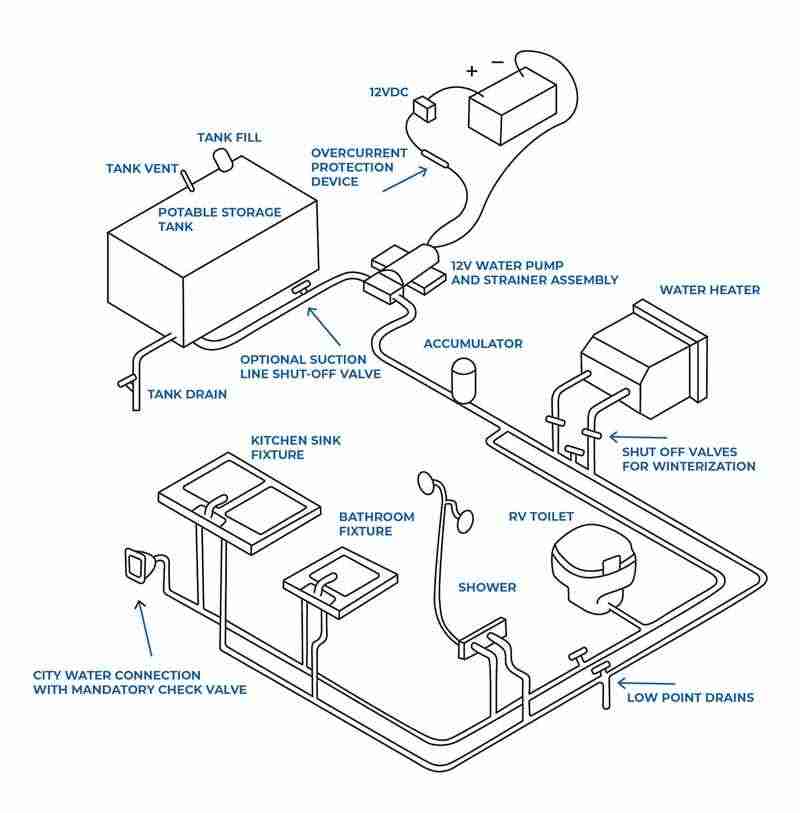
An RV water filter is designed to remove impurities and contaminants from the water source, ensuring clean and safe water for drinking, cooking, and other uses. We suggest installing and regularly maintaining a water filter, which helps protect your health and the longevity of your plumbing system. On the other hand, RV water pumps are responsible for pressurizing the water and distributing it throughout your RV. These pumps draw water from the freshwater tank and deliver it to faucets, showers, and toilets. Therefore, understanding how the water pump operates, including proper maintenance and troubleshooting, is crucial for consistent water flow.

RVs have separate tanks for gray water, which includes water from sinks and showers, and black water, which contains waste from the toilet. We suggest understanding local regulations, finding designated dumping stations, and adopting responsible waste disposal practices that preserve the environment and comply with legal requirements. Further, differentiating between gray and black water is important to avoid cross-contamination and maintain cleanliness. Gray water is relatively clean and can be disposed of in designated areas or used for certain purposes, like watering plants. However, black water must be disposed of in dedicated dumping stations to ensure proper sanitation and hygiene.
RV Toilets and Showers
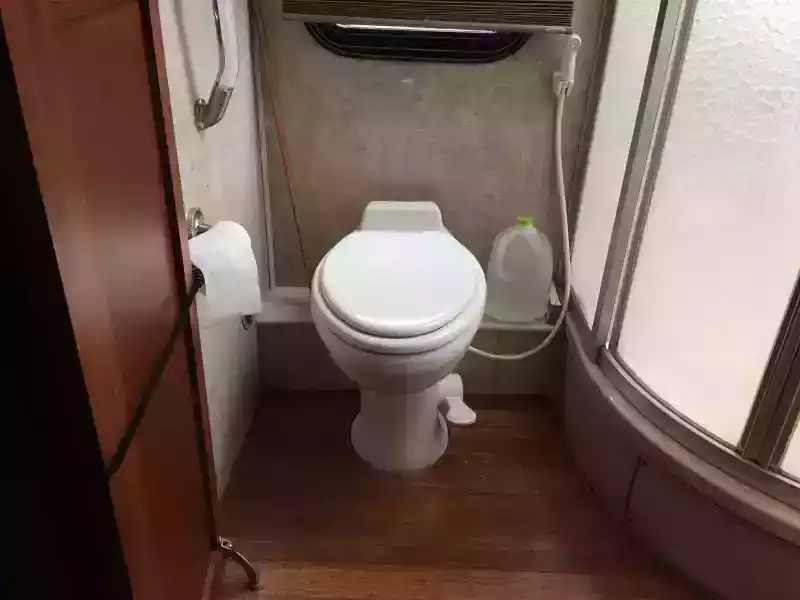
Now that we have explored the basics of plumbing in your RV and the water system, we will look at the essentials: RV toilets and showers! These plumbing units provide convenience and comfort while on the road. Therefore, understanding the different types of RV toilets, such as camper toilets and camper portable toilets, along with various options for showers and tubs, can enhance your overall RV experience.
RV toilets are designed to be compact and efficient, fitting the limited space available in RV bathrooms. Camper toilets are specifically designed for RVs, offering water-saving features and easy installation. Camper portable toilets provide a convenient solution for outdoor activities or camping, allowing you to have a restroom facility wherever you go.

RV showers come in different styles and configurations. Some feature a bathtub-shower combination, which allows you to enjoy a relaxing soak or a quick shower. Others may have a dedicated shower stall or a shower tub, providing space-saving features. Stand-alone tubs or soaking tubs offer a luxurious bathing experience, adding a touch of comfort to your RV lifestyle.
Additionally, RV shower heads are crucial in providing a comfortable and efficient shower experience. Consider options with adjustable settings for water pressure and spray patterns to suit your preferences. Also, do not forget about investing in a nice shower curtain!
For those who prefer a portable option, a portable bathtub can be a great choice. These lightweight and collapsible tubs can be set up outdoors, allowing you to enjoy a refreshing bath surrounded by nature!
Plumbing Accessories and Fixtures
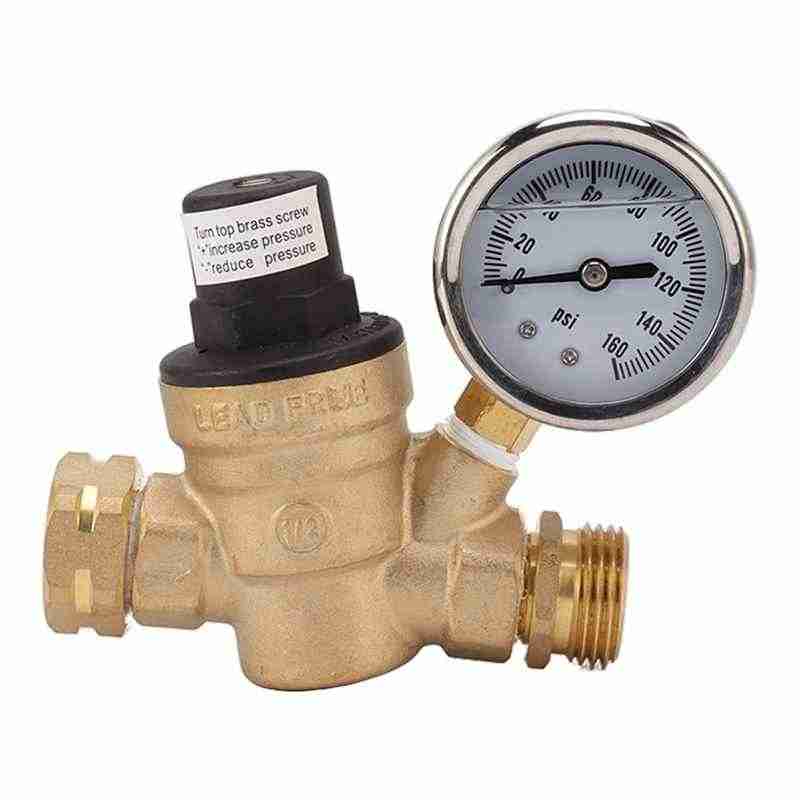
There are plenty of different types of RV plumbing fixtures, like sinks, faucets, and plumbing components, when it comes to maintaining and upgrading your plumbing system. RV sinks come in various styles and materials, such as stainless steel or acrylic. They are designed to be compact and lightweight, maximizing space in your RV. Further, different types of RV sinks include single or double-bowl sinks, bar sinks, or even corner sinks, allowing you to choose the option that best suits your needs and available space.
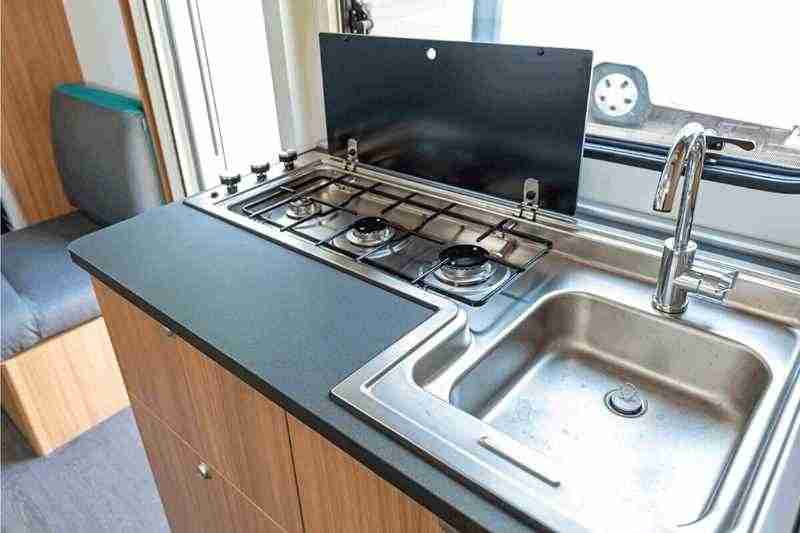
RV faucets offer a wide range of options, including single-handle or double-handle designs, pull-out or pull-down sprayers, and various finishes to match your RV’s interior style. Further, faucet parts are essential for maintaining and making RV plumbing repairs. These components include cartridges, handles, aerators, and other RV plumbing accessories that ensure proper water flow and control. Lavatory faucets are specifically designed for bathroom sinks, while RV kitchen faucets are tailored to meet the demands of a functional kitchen space in your RV.
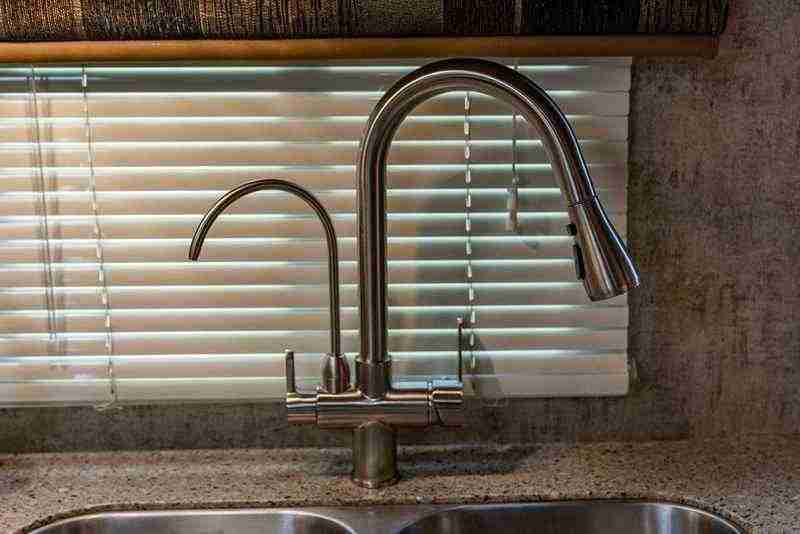
Plumbing parts, such as plumbing unions and brass fittings, are also vital for connecting different sections of your RV plumbing system. These components provide secure connections and prevent leaks or malfunctions. Therefore, by selecting high-quality fixtures and utilizing proper installation techniques, you can ensure a reliable and efficient plumbing system for your RV adventures.
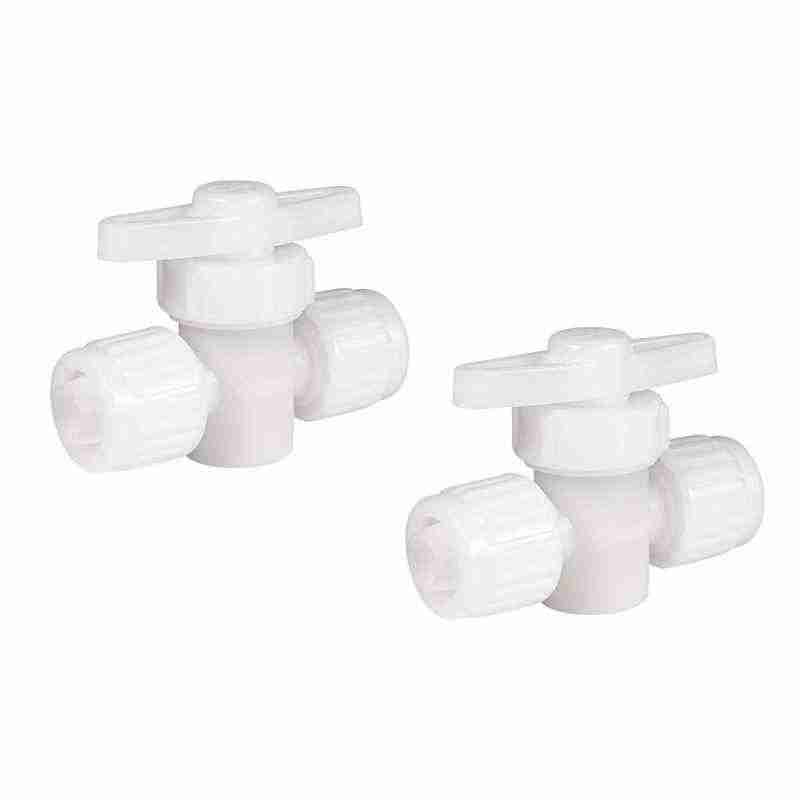
FAQs
What type of plumbing do RVs use?
RVs typically use a type of plumbing called PEX (cross-linked polyethylene) for their water supply lines. PEX is popular in RV plumbing systems due to its flexibility, durability, and resistance to freezing temperatures.
Is RV plumbing the same as house plumbing?
No, plumbing in an RV is not the same as house plumbing. While there are similarities, there are also important differences due to RVs’ unique nature. RV plumbing components are designed to be compact, lightweight, and portable, which means they have different components and considerations compared to traditional house plumbing systems.
How does an RV plumbing system work?
An RV plumbing system works by using a combination of fresh water and wastewater tanks, as well as a network of pipes and valves. Fresh water is stored in a tank and can be pumped to various fixtures such as sinks, showers, and toilets. Wastewater from these fixtures is collected and stored in a separate wastewater tank. When the wastewater tank is full, it must be emptied at a designated dumping station. A network of pipes and valves helps direct the flow of water between the different fixtures and tanks within the system.
What type of PEX is used in RVs?
Cross-linked polyethylene (PEX) type B is commonly used in RVs. It is the same product that is used in some residential applications















